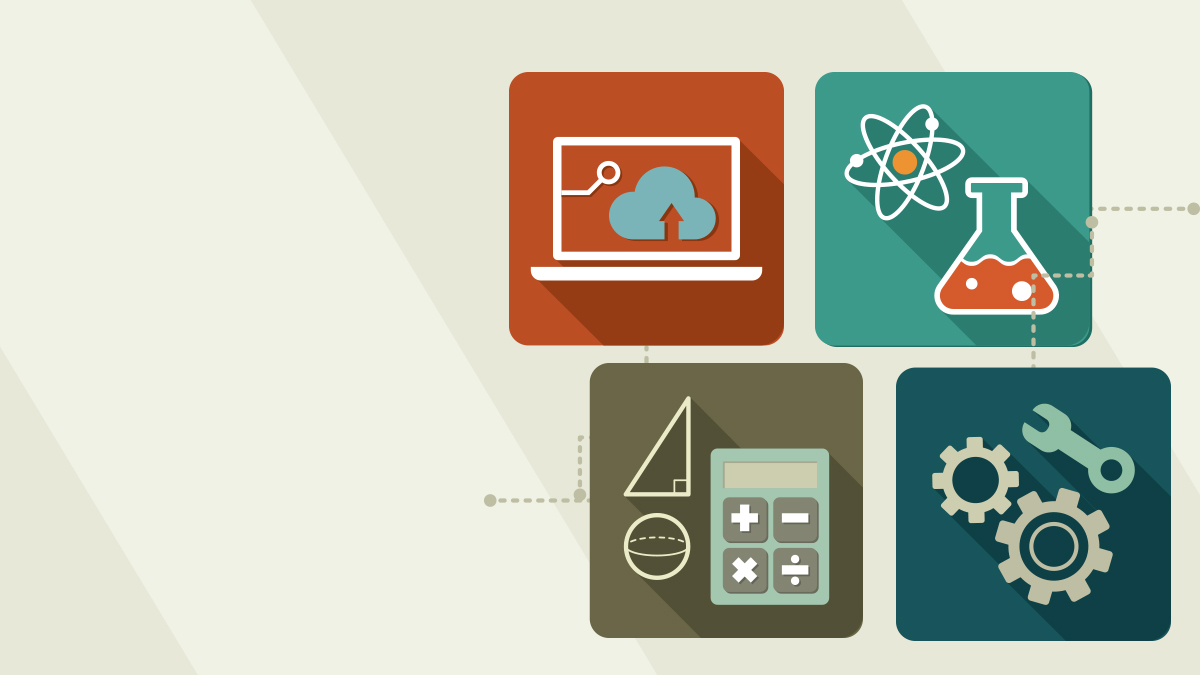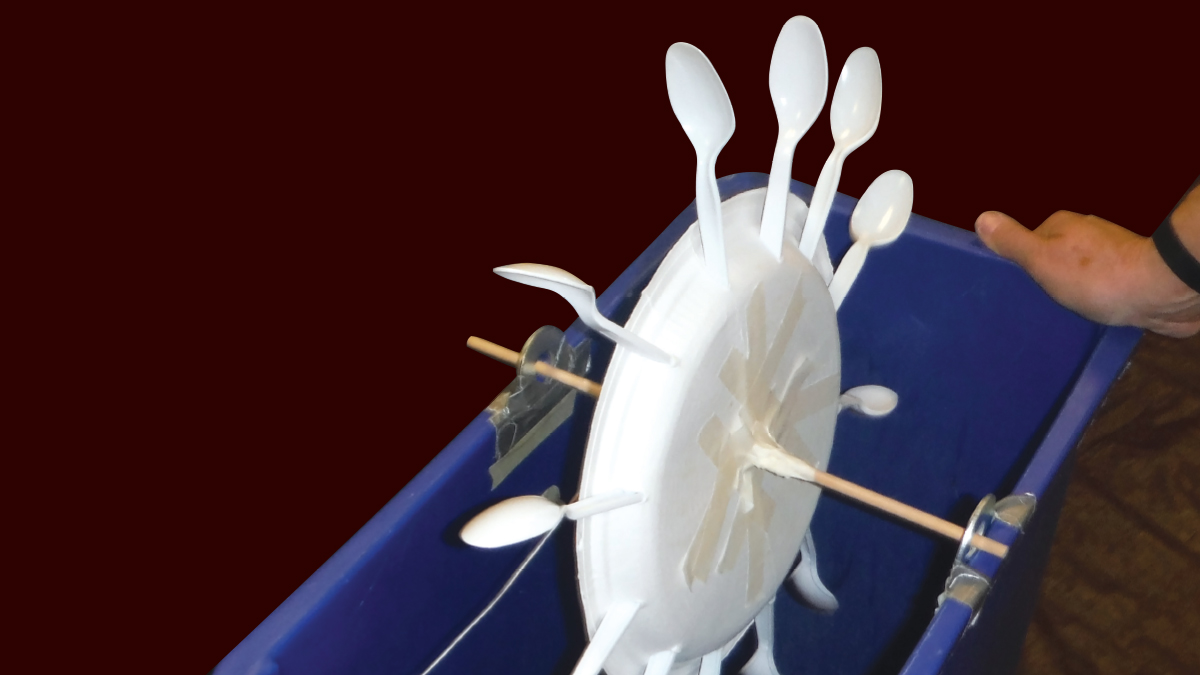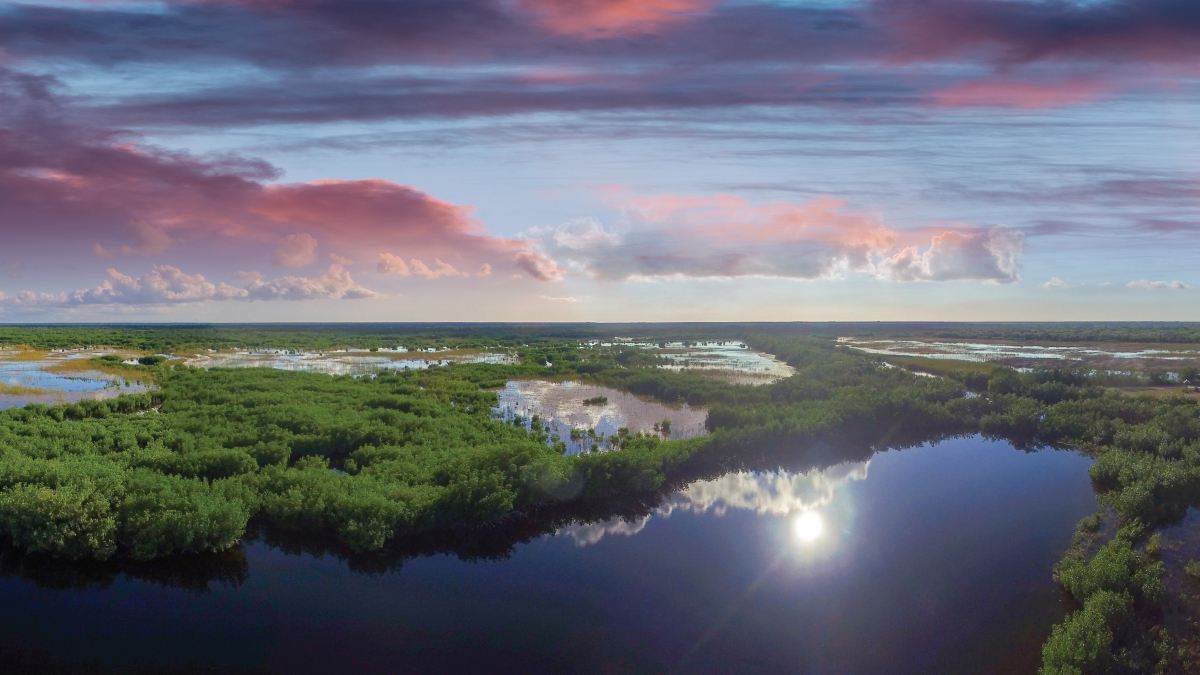Unpacking the STEM Disciplines
A project on human impacts on the environment provides many opportunity to explore the disciplines of STEM.
A Water Wheel Challenge!
Learning about energy conversion through engineering design
Simulating a Non-Native Invasion
Fourth-grade students design a computer simulation to model how a new species introduction affects native populations.
Crossing the Amazon by LEGO
An interdisciplinary STEM adventure
Science and Children—February 2019
By Daniel Edelen, Sarah B. Bush, Megan Nickels
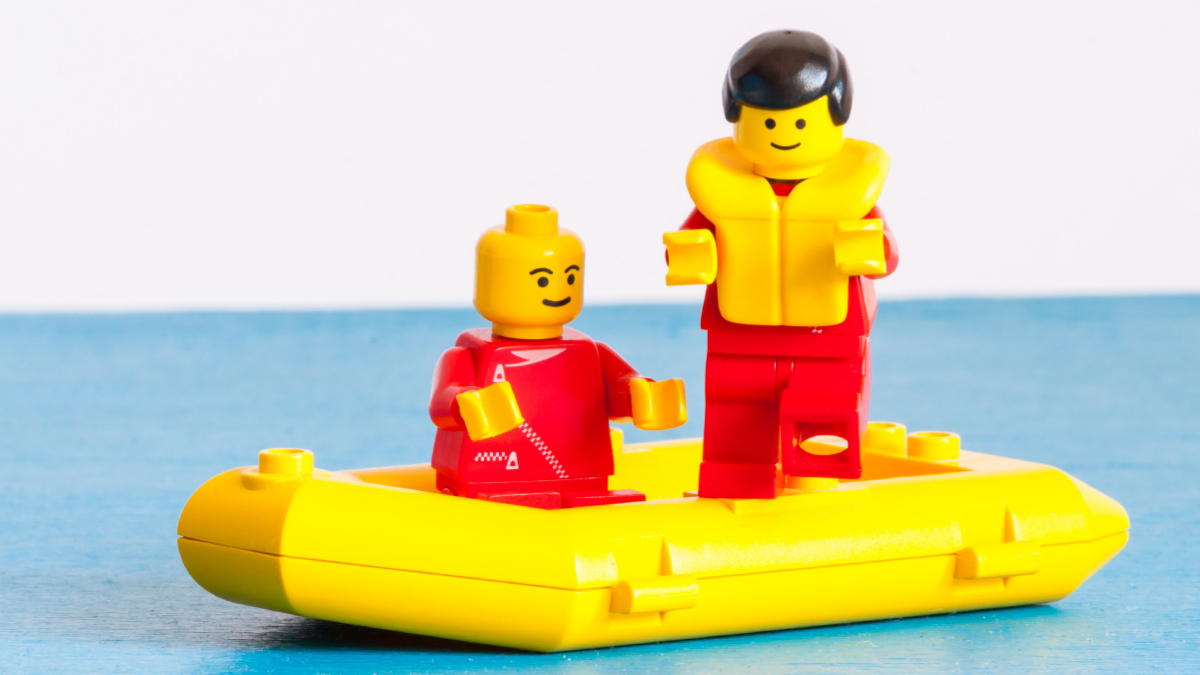
Disequilibrium
Surface Tension and Surfactants
Science Scope—February 2019 (Volume 42, Issue 6)
By Todd Hoover
Using Storylines to Support Three-Dimensional Learning in Project-Based Science
Science Scope—February 2019 (Volume 42, Issue 6)
By Jeffrey Nordine, Joseph Krajcik, David Fortus, and Knut Neumann
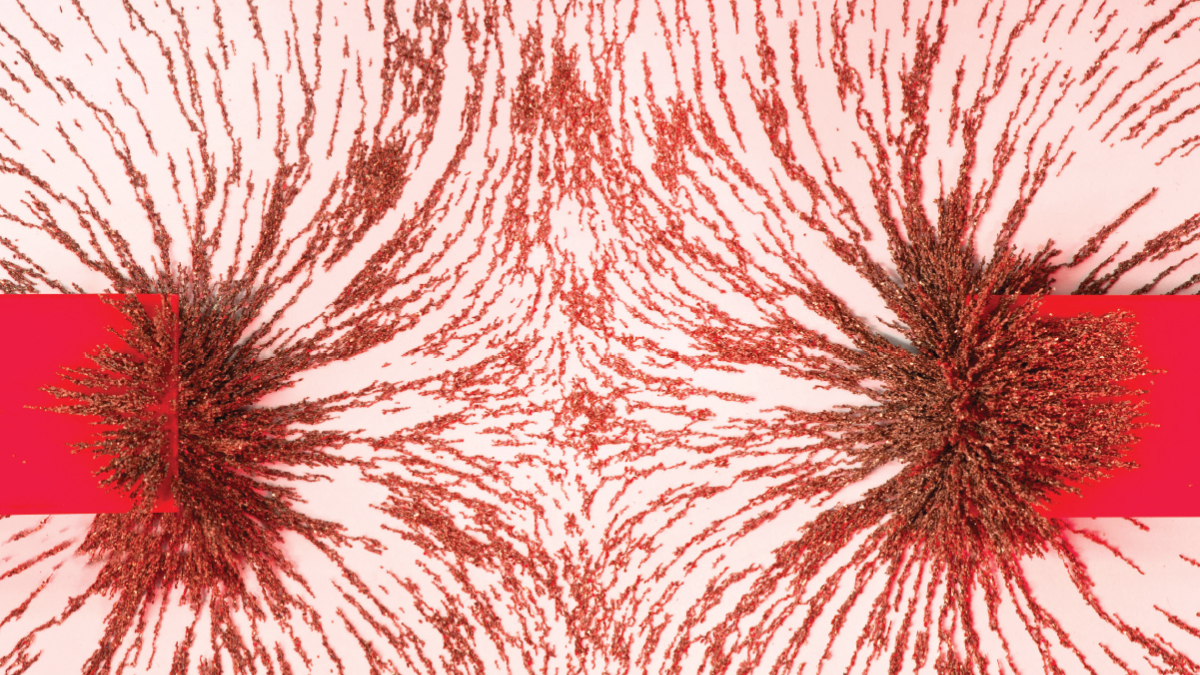
Investigating Environmental Changes outlines a journey that will steer your students toward authentic problem solving while grounding them in integrated STEM disciplines. As are the other volumes in the series, this book is designed to meet the growing need to infuse real-world learning into K–12 classrooms.
Investigating Environmental Changes outlines a journey that will steer your students toward authentic problem solving while grounding them in integrated STEM disciplines. As are the other volumes in the series, this book is designed to meet the growing need to infuse real-world learning into K–12 classrooms.
Patterns and the Plant World outlines a journey that will steer your students toward authentic problem solving while grounding them in integrated STEM disciplines. As are the other volumes in the series, this book is designed to meet the growing need to infuse real-world learning into K–12 classrooms.
Patterns and the Plant World outlines a journey that will steer your students toward authentic problem solving while grounding them in integrated STEM disciplines. As are the other volumes in the series, this book is designed to meet the growing need to infuse real-world learning into K–12 classrooms.
Preparing Future Teachers to Put Investigation and Design at the Center of Their Classrooms
By Cindy Workosky
Posted on 2019-01-31
The recently released report Science and Engineering in Grades 6–12: Investigation and Design at the Center makes a strong statement right in the title: engaging students in scientific investigations and engineering design should be the core of what teachers do in their classrooms. Other blog posts have described how investigation engages students in doing science and the role teachers play in facilitating students’ investigations and reasoning—and that this is a role that few teachers have been prepared to play.
There is much to be done to support current teachers in taking on this new role. At the same time, however, over 150,000 college students complete traditional teacher preparation programs each year and enter the teaching workforce, and these programs need to evolve to support future teachers in their new roles as well. As the report states, “teachers need not just science content knowledge, but also personal experience with the process of investigation and design and time to reflect” about those experiences (p. 7-18). Recommendation 5 of the report emerges from that need: “Undergraduate learning experiences need to serve as models for prospective teachers, in which they experience science investigations and engineering design as learners.”
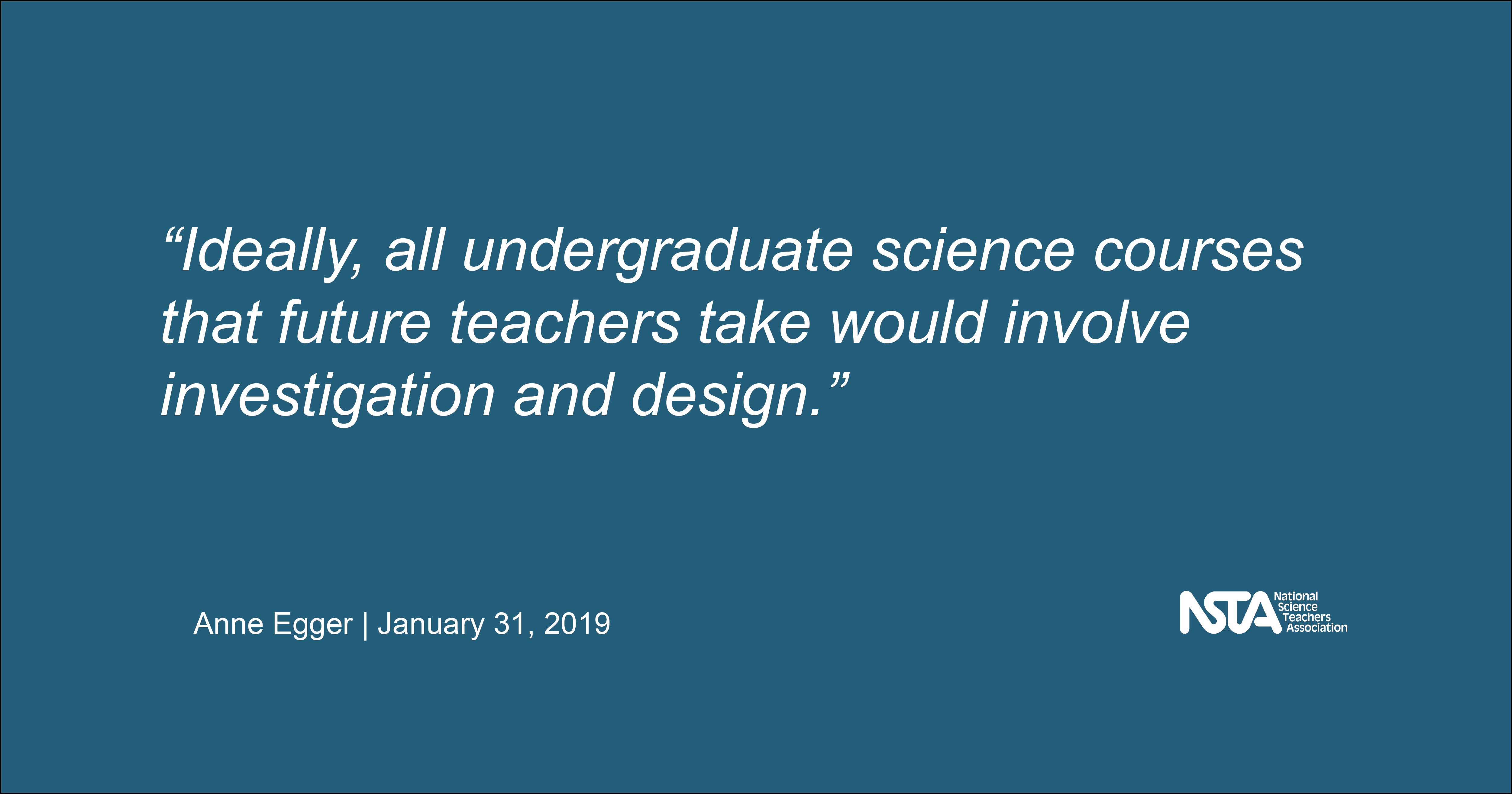 As a faculty member at a university with a large and long-lived teacher preparation program, I recognize the challenges underlying recommendation 5. The science courses that future teachers take in college are typically spread across disciplinary departments; instructors who teach those courses may or may not be aware that there are future teachers in their classes. Most of the science courses future teachers take are not part of their preparation program, but are general education requirements. As described in Chapter 7 of the report, these courses rarely provide students with opportunities to engage in investigation and design. Even as the evidence mounts for the effectiveness of active learning strategies not only for increasing student learning but in narrowing achievement gaps, uptake of these strategies is still not widespread in undergraduate science courses.
As a faculty member at a university with a large and long-lived teacher preparation program, I recognize the challenges underlying recommendation 5. The science courses that future teachers take in college are typically spread across disciplinary departments; instructors who teach those courses may or may not be aware that there are future teachers in their classes. Most of the science courses future teachers take are not part of their preparation program, but are general education requirements. As described in Chapter 7 of the report, these courses rarely provide students with opportunities to engage in investigation and design. Even as the evidence mounts for the effectiveness of active learning strategies not only for increasing student learning but in narrowing achievement gaps, uptake of these strategies is still not widespread in undergraduate science courses.
Active learning strategies include small-group discussion and using classroom response systems to pose questions—these approaches (further described in Chapter 4 of Reaching Students) incorporate aspects of investigation and design, and can build habits that are helpful for future teachers. They do not necessarily engage students in the full suite of science and engineering practices to build their understanding of core concepts, but they are a step along the way and can be leveraged to further transform undergraduate science courses to better serve prospective teachers.
The report also describes several ways in which undergraduate learning experiences can serve as strong models. Many universities offer science courses specifically for future teachers—where these already exist, they can be modified to incorporate more opportunities for future teachers to ask questions, plan and conduct investigations, collect and analyze data, and work together to build their understanding of phenomena and address design challenges. In my own experience, designing such a course in Earth science required rethinking the course from the ground up to make substantial, sense-making investigations the core of my instruction, but the benefits are already paying off as I see my students delve into each new map we look at and start to build connections between concepts.
Other successful strategies have involved providing future teachers with research opportunities through both course-based research experiences, such as in the Research Methods course of the UTeach curriculum, or through externally-funded summer research experiences, such as the Science Teacher and Researcher (STAR) program, which recruits students enrolled in STEM teacher preparation programs and places them in national laboratories for a summer research internship while also pairing them with a master teachers and science education faculty member.
There are two keys to making these experiences effective. The first key is reflection: beyond experiencing investigation and design as learners, prospective teachers need the opportunity to articulate their own learning process and reflect on how to incorporate it into their classroom, especially when it is very different from the way they have learned science in the past.
The second key is that one such experience is not enough. Ideally, all undergraduate science courses that future teachers take would involve investigation and design. University faculty involved in teacher preparation and education research play a critical role in making this happen, by providing evidence of the effectiveness of active learning and investigation in improving all students’ performance—not just future teachers—to their peers and administrators, and even leading professional development for their peers to support them in transforming their courses or developing new ones.
Education is a complex system, and systemic change requires considering all components of the system and how they interact. This report can serve as a resource for university faculty and administrators interested in making change happen in their component and its interactions with the K–12 system.
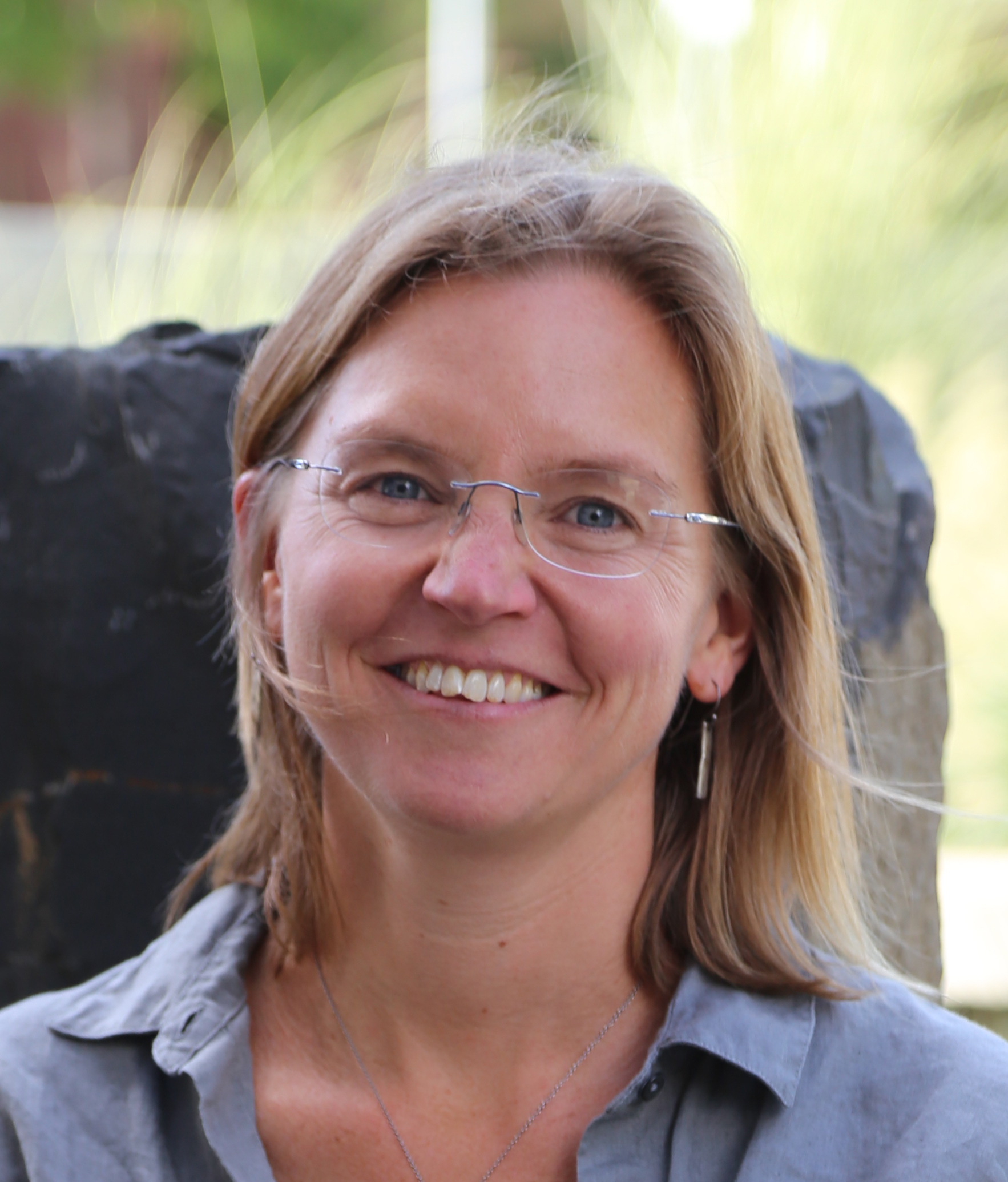 Anne Egger is an Associate Professor of Geological Sciences and Science Education at Central Washington University and a former president of the National Association of Geoscience Teachers (NAGT). She is a member of the Committee on Science Investigations and Engineering Design Experiences in Grades 6-12.
Anne Egger is an Associate Professor of Geological Sciences and Science Education at Central Washington University and a former president of the National Association of Geoscience Teachers (NAGT). She is a member of the Committee on Science Investigations and Engineering Design Experiences in Grades 6-12.
The recently released report Science and Engineering in Grades 6–12: Investigation and Design at the Center makes a strong statement right in the title: engaging students in scientific investigations and engineering design should be the core of what teachers do in their classrooms.
Learn How to Build Community Partnerships at the 8th Annual STEM Forum & Expo
By Carole Hayward
Posted on 2019-01-31
Last spring, an article in the April/May 2018 issue of Science Scope highlighted a community partnership between a middle school in Massachusetts and a group of scientists at Woods Hole Oceanographic Institution (WHOI). In the article, Engineering Partnerships, the authors describe a successful, engaging engineering design project developed by a classroom teacher and a WHOI scientist who studies deep-ocean microbes.
Creating these types of partnerships can be highly rewarding for both students and educators. That is why organizers of the 8th Annual STEM Forum & Expo, hosted by NSTA this coming July in San Francisco, have devoted an entire strand on the subject. Sessions in the “Building STEM Ecosystems: Community Partnerships” strand will highlight select preK–16 partnership initiatives that have been successfully implemented and have demonstrated positive outcomes. School administrators will learn ways to assess the effectiveness of these partnerships.
Sessions in the strand will also guide participants on how to leverage local resources and build partnerships with community organizations such as government agencies, engineering firms, factories, farmers, agricultural extension offices, doctors, and hospitals. These partnerships provide STEM experiences that allow students to develop the skills and mind-sets needed to answer complex questions, investigate global issues, and develop solutions to real-world challenges.
The Earlybird Registration deadline for the 8th Annual STEM Forum & Expo is May 13; register early to save. This unique, focused event, held July 24–26, 2019, at the Moscone Center West in San Francisco, provides resources for educators and organizations seeking to learn more about STEM education, associated outreach programs, partnerships, schools, and curricula. In addition to the Community Partnerships strand, the forum will also feature strands and sessions geared toward elementary, middle, high school, and post-secondary educators. Attendees are eligible to earn graduate-level credit.
Visit the conference website for more information on the STEM Forum & Expo. We hope to see you this July in San Francisco!
Follow NSTA



